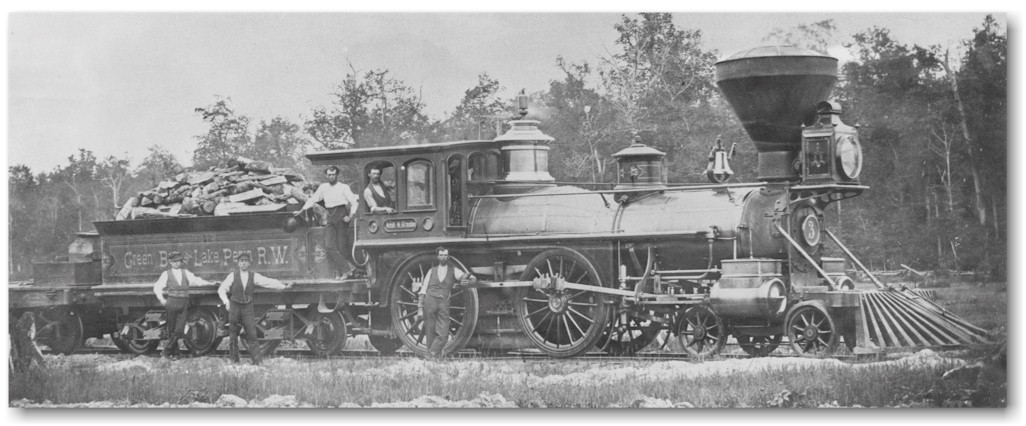|
Home
|
|
The crew poses with their wood-burning locomotive #3 during the early days of the Green Bay Route. The Green Bay & Lake Pepin Railway was the original predecessor of the Green Bay & Western Railroad. Construction began in 1869 and the first rails were spiked on November 2, 1871. Construction began with a second-hand engine #1, which was soon superceded by engines #2 and #3, delivered new from the Grant Locomotive Works of Paterson, N.J. on December 2, 1871 for $13,000 each. An early tradition on the GB&LP was to name locomotives after financial backers of the railroad. Engines #2 and #3 were named SAMUEL MARSH and JOSEPH H. SCRANTON. They were named after named after a GB&LP financier and former Erie Railroad president, and the president of the Lackawanna Iron and Coal Company which sold steel rails to the railroad, respectively. Grant Locomotive Works won a gold medal at the Paris Universal Exposition in 1867 for an elegantly furnished locomotive they presented at the show. From that point on, Grant works placed a replica of this medal on the cab of every engine it built. If you look at the image below, the front and back of the medal are in the two circles below the cab window. Other gold medal winners at the Paris show included Steinway & Son for a piano and a grain reaper from C.H. McCormick, which put Grant in some elite company. This photo was likely taken during the summer of 1872 while construction of the railroad continued westward. Counterweights have not yet been installed on the driving wheels. The Story of the Green Bay and Western (Railway & Locomotive Historical Society, 1966) claims that locomotive #3 had the distinction of pulling the first GB&LP regularly scheduled train from Green Bay to New London on December 19, 1871, although Stan Mailer's Green Bay & Western, (Hundmann Publishing, 1989) disputes this and claims that engine #1 pulled the train. Passenger service between Green Bay and New London began the following week when about 70 citizens of Green Bay arrived to attend New London's railroad celebration. |

ca. 1872
From the collection of Fred Hoeser.
This photo may not be reproduced without permission.